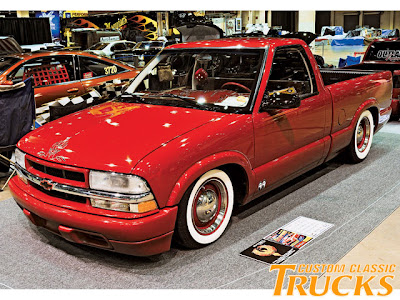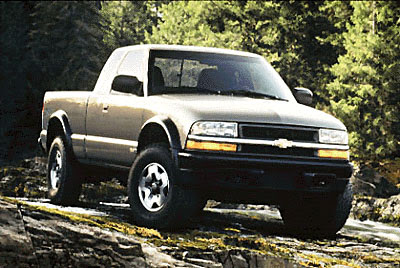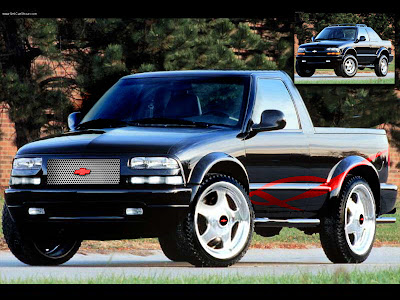General Motors launched the Chevy S10 for sale as one of their responses to the growing success of Japanese compact pickups in the early 1980s. The S10 was an instant success, and it didn't take long for it to become one of the trucks to beat in the segment, at least from the consumer's perspective. It had a lot going for it in addition to being compact. It was American, affordable, and highly customizable.
The S10's 23-year run spanned just two vehicle generations. The current used truck shopper will want to focus all of their attention on that second generation. Prospective buyers may want to know that automotive critics were never very fond of the Chevy S10 for sale, and they usually leaned in favor of the alternatives from Dodge, Ford, Nissan, and Toyota. However, that never stopped the S10 from being extremely popular with the average consumer.
The second-gen Chevy S10 for sale was available from 1994 until 2004 as both a regular and an extended cab. In the final years of the model, it was also available with a crew cab body and either a short or a long bed. The 1996 Chevy S10 for sale saw the introduction of the Sportside bed with optional 3-door access cab.
The extended cab with the third-door access panel is a great boon for loading cargo, or for allowing an adult to squeeze into that tight rear area. Unfortunately, the third-door is notorious for rattling off-road and on rough roads.
There were also two levels of the ZR2 package. The ZR2 SS trim upgraded the S10 to a high-output V6 engine, sports-tuned suspension, and alloy wheels. The second-level ZR2 equipment package brought 4-wheel drive, an upgraded suspension, and larger off-road tires.
The 1994-1997 Chevy S10 for sale featured a 2.2L 4-cylinder engine standard, which produced 118 horsepower on the rear-wheel-drive models. The 165-horsepower 4.3L V6 came with the 4WD models standard, and it was available on the 2WD models as an option. Transmission choices were always either the 4-speed automatic or 5-speed manual.
Safety was never a prime consideration for Chevy with the S10, and this is one of the reasons that buyers should avoid those first-gen models. Even in the second generation, standard safety equipment was limited to rear antilock brakes. Four-wheel ABS was optional until 1996 when it became standard. Chevy added a driver-side airbag in 1995.
In 1998, Chevrolet gave the S10 a mid-generation facelift, the centerpiece of which was the aggressive front end. The facelift also included an updated interior and dual airbags that went a long way toward improving the S10's previously meager safety measures.
In 1999, Chevy introduced an S10 Xtreme, which was the on-road counterpart to the ZR2. It was available only as a rear-wheel-drive vehicle, and it had 2 inches less clearance. It also included 16-inch aluminum wheels, a sports-tuned suspension, full ground effects, wheel flares, and body-colored grilles and bumpers.
The S10 for sale from the mid-1990s to its discontinuation in 2004 was loaded with versatility and value even if the critics didn't like. A common and valid complaint was the cheap interior materials that Chevy used. S10 interiors do tend to look ragged over time. In addition, S10s like to squeak and rattle, and that grows worse with time as well. However, if one can overlook these shortcomings, an S10 is a solid used compact truck that one can have at a bargain price.





